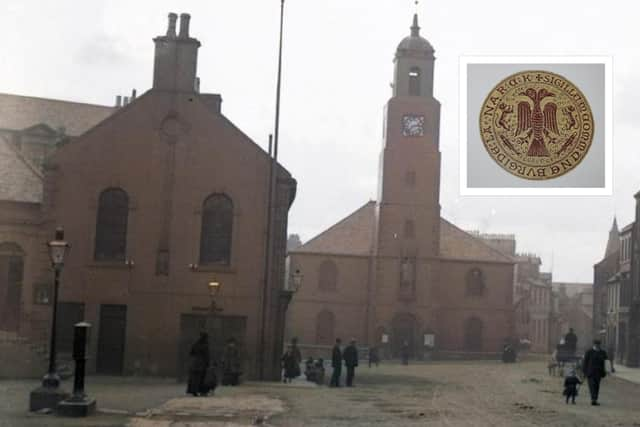Tolbooth is at the centre of Lanark's story
and live on Freeview channel 276
Archaeological excavation has never taken place here so we have to rely on documentary evidence.
The Tolbooth is where burgesses laid out their goods for sale on the ground floor in booths/small shops on market days. Nearby traders from outside the Burgh would display their goods in covered market stalls in return for paying a toll/tax on their goods.
Advertisement
Hide AdAdvertisement
Hide AdThis money was collected at the Tolbooth and the bulk of it went to the King. This money was a major source of finance for the monarchy.


Gradually Lanark became one of the most important burghs in Southern Scotland; this was due to the fact that it lay on the main routes between Glasgow to Carlisle and Edinburgh to Ayr. Its importance was recognised by the regular granting of charters stipulating the privileges and rights of the burgesses.
The word burgess meant a town dweller who had property and a strip of land. Every year the burgesses had to pay the king a nominal sum for this privilege – a feu duty. This was only abolished in the 1970s and I remember paying this to Ailsa Homes when I lived in Laverockhall.
Apparently feu duty, originally collected in the Tolbooth, could be waived if you were prepared to turn up to serve your feudal superior in armed conflict for 30 days!
Advertisement
Hide AdAdvertisement
Hide AdThe earliest surviving charter regarding the rights and privileges of the burgesses is that issued by Alexander II at Selkirk on August 10, 1227; there is no charter for 1140 but it was a Burgh during the reign of David I.
The best charter I’ve seen is the one granted by Alexander III at Scone on November 15, 1285. This clearly lays out the privileges of Lanark’s burgesses which give them control over buying and selling wool and cloth.
Our excavations in Lanark clearly demonstrate how traders brought goods from all over Europe to Lanark. Pottery came from Flanders, France, Germany, England and, of course, Scotland.
Given that Lanark was one of the wealthiest towns in Southern Scotland in 1369, it is not surprising that Lanark became a member of the Council of Four Burghs. The implications of that and the rest of the Tolbooth story will be in next week’s Gazette.